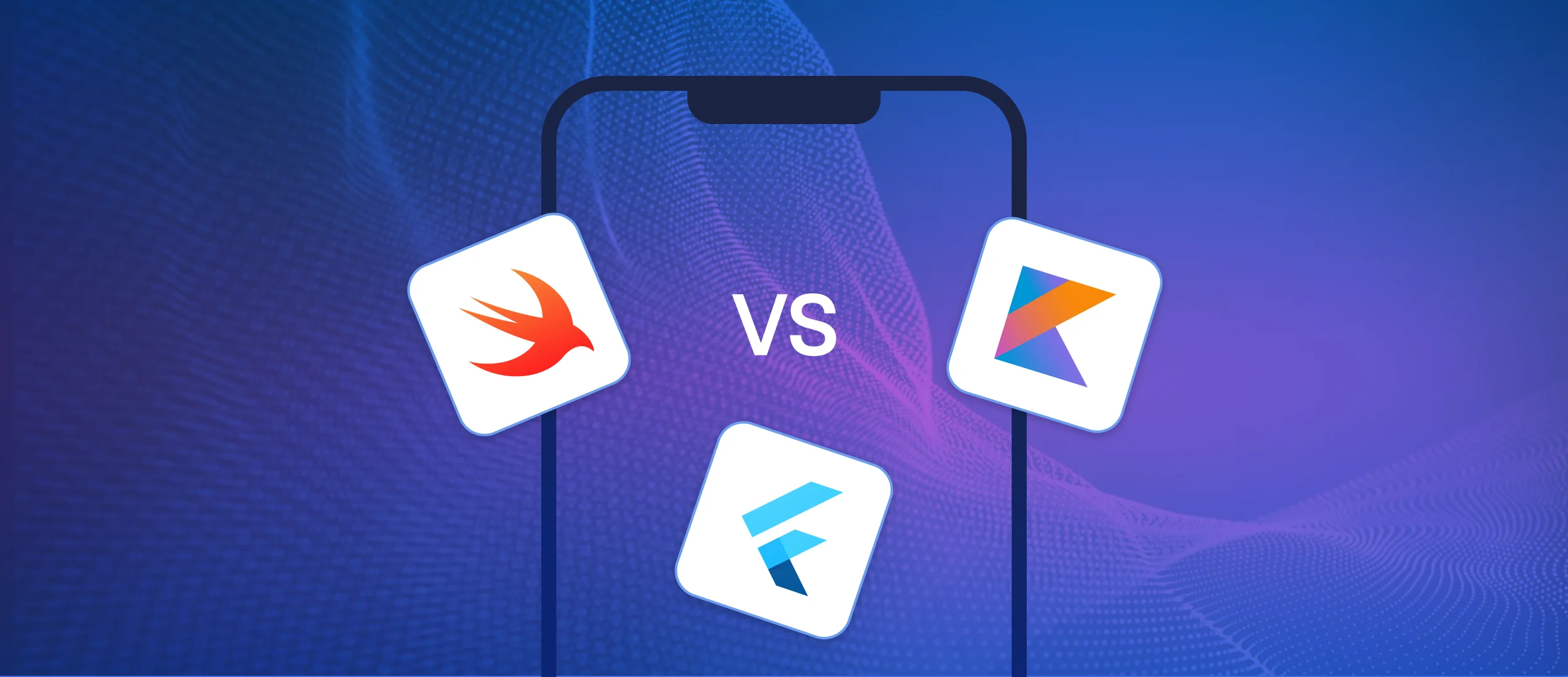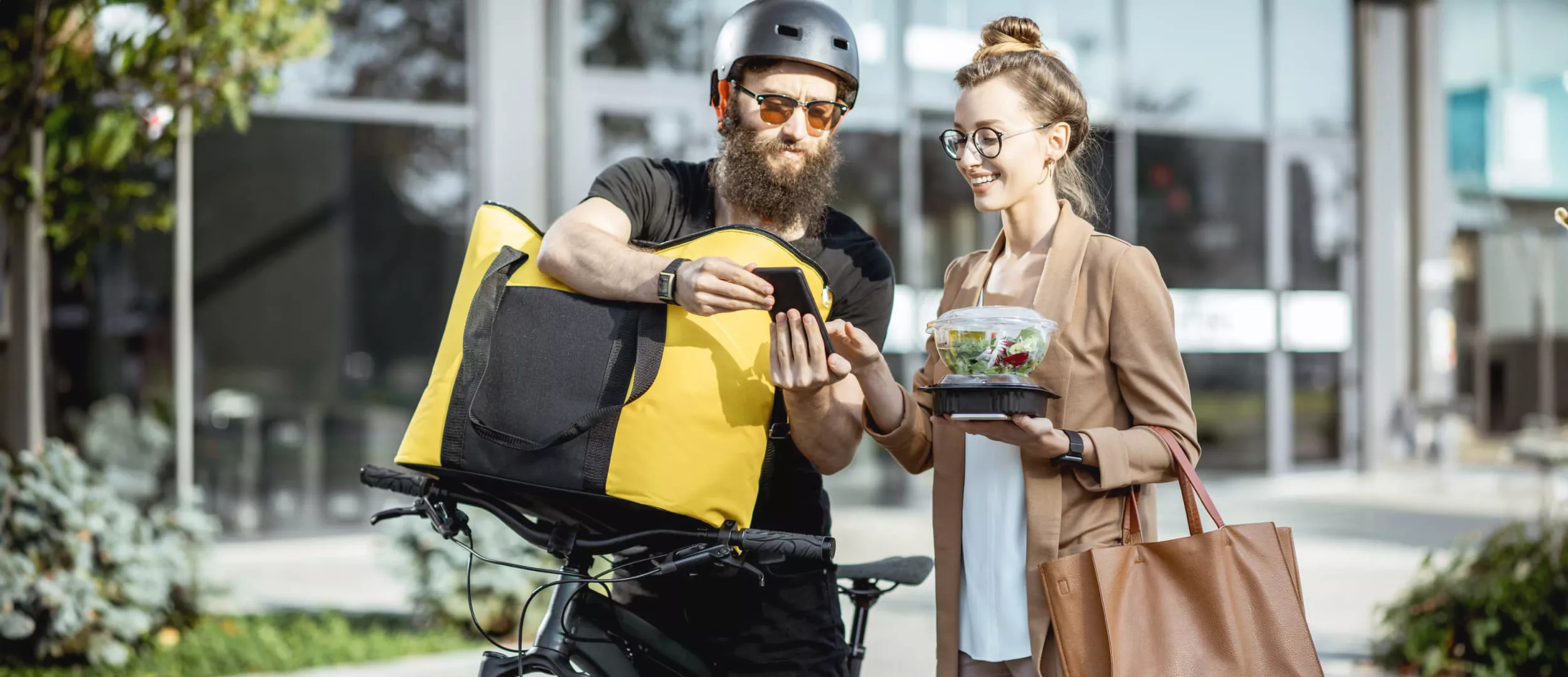
The food delivery industry is relatively young, just coming of age, one could say. The first online menus appeared 20 years ago and have made a journey to mobile apps that provide their delivery services.
The market size of the online food delivery industry worldwide was estimated at $770 billion in 2022, and its 2024 expectation is $920 billion, with further growth to $1.45 Trillion by 2027. Platform-to-consumer delivery constitutes 60% of the market, followed by the restaurant-to-consumer segment. You can see the revenues of the online food delivery market worldwide from 2017 to 2027, broken down by segment (in trillion U.S. dollars) in the picture below.

Food delivery app development has never been so timely and promising.
To support this statement, we’ll just provide the following statistics:
- 63% of consumers use third-party delivery more than it was before the pandemic.
- 90% of consumers are going to increase their food delivery service usage in the future.
Naturally, the top players, such as Uber Eats, set the high bar for modern solutions in this sphere. However, it only means food delivery app development companies accept the challenge and create cutting-edge solutions to meet the demands.
If you are ready to take a share of the $920 billion market, you are in the right place, but let’s first find out what a food delivery application is.
What Is a Food Delivery App & Who Needs It?
Food delivery service is a home delivery in which stores, cafes, restaurants, or third-party apps deliver food to consumers on demand. Delivery may include groceries from supermarkets or cooked meals, catering, or wholesale.
Historically, the first case of food delivery occurred in Italy in 1889, when the King ordered the pizza to be delivered to his palace in Naples. However, the modern food delivery service got a start in the 50s of the previous century in the USA. Middle-class Americans preferred to sit at home in front of their TV sets and the restaurants lost their money. The restaurants which introduced delivery service enjoyed more than 50% sales growth in a short period.
Nowadays, offers are generally placed through a mobile app, website, or phone.
So, let’s also consider which entities should develop a food delivery app. The key players in the market are food establishments and startups. The first use of food delivery applications to reach more customers. They can also utilize mobile solutions to relieve their restaurants during the busiest hours of the day. Thus, they allow their clients to make an order in advance and plan their work accordingly. The clients can also order food to go if all the seats are occupied. Both the clients and the restaurant benefit from such an option, the latter can generate up to 25% more revenue thanks to an application.
COVID-19 accelerated the digitalization of the restaurant industry, however, the trend is projected to continue over the next 5 years.
Regional aggregator startups widely use food delivery applications, where the users can choose food from multifaceted food establishments, or even specialty stores and supermarkets. Then cafes, restaurants, and other establishments partner with the aggregator and benefit from the increased sales. The startup in its turn gets a percentage of the app usage by various establishments. So, no matter if you are a food business owner or just a startup, you can enter the market and benefit from the niche.
All you need to know is below, just go on reading.
How to Develop a Food Delivery App
The niche research & analysis
Before taking up an on demand food delivery app development, you should find the answers to certain questions. That’s why you need to carefully study your competitors and the leading solutions in the market to find their strengths and weaknesses. With this information, you can create and make better, quicker, and more innovative apps than the ones already existing in the market.
If you need help with this step, you can always order discovery phase from our experienced team, which specializes in developing custom software solutions for logistics. Expert-made research can sensitively reduce the cost of developing a food delivery app; sometimes it saves up to half the budget.
Business model selection
It’s not enough to plan your development procedures, when it comes to food or grocery delivery app development, you need to decide upon your business model. At a minimum, you should consider the following options:
- Own vehicles' usage. This model is time and money-consuming, it also involves more risks and presupposes higher responsibility.
- Taxi or external courier service. With such a model, your solution will become a connecting dot between the clients, drivers, and restaurants.
- Foodservice own delivery. In this case, you will only need to connect the clients with the food establishments. This approach requires minimum involvement and less control.
Monetization strategy choosing
Without monetization, any startup dies. If we’ll set our eyes on UberEats, 3 major app monetization strategies can be figured out:
- Advertising. Food establishments pay for their promotion in the app search.
- Delivery Fee. Initially, they took some fixed fee а $4.99 for order delivery, then started to calculate it according to the distance between food sites and clients.
- Revenue Sharing from businesses. For each order placed, the platform charges a fee.
App functionality
Before delving into the app development, and turning to a food or grocery delivery app development company, you should figure out what features and functionality it requires. Decide upon the key features that you would like to see on Glovo or UberEats, and then, go into even more detail, paying attention to the features for each of the 3 main agents: client, restaurant, and courier.
Food delivery app development
This step is better to trust an expert development team, then you can be sure to get the product that stands out. Moreover, outsourcing your product development is often cost-effective. Testing, launching, and publishing should also be mentioned here, but you’ll find more details below.
Let’s first deal with the key features of a food delivery application.
Food Delivery App Features
As we have mentioned above, the application’s functionality should be developed in the context of the 3 key user categories: client, food establishment, and courier.
Client’s application
Sign up feature
The customers should have an opportunity to sign in and create their account to track orders, make safe payments and leave feedback. Do not forget about e-mail confirmation and password restoration options.
Reviews and ratings
This feature allows the users to choose from a variety of establishments based on honest and sincere user opinions.
Chat and in-app calls
For the clients' convenience, allow them to check their order updates right in the app and chat with customer service or call them right from the app.
Payment
Convenience matters, so integrate an app payment system for quick and safe payments right into your solution. Integrate credit cards, Apple Pay, Google Wallet, PayPal, and more, it’s always better to include as many options as possible.
Order placement and shopping cart
The possibility to order right from the menu is a small, yet important client-friendly option, that is worth consideration. You may implement filters to make the choice even more convenient. The shopping cart should contain all the necessary info, including the total cost, time of delivery, and payment methods to choose from.
Order Scheduling
The clients should be able to select the delivery time to receive the order when it’s convenient for them.
Geolocation and Order tracking
With a map integrated into your solution, you allow users to find a restaurant or a vendor nearby or in some specific location. The opportunity to track couriers in real time will add to the convenience, estimate the delivery time and find out about the delays possible.
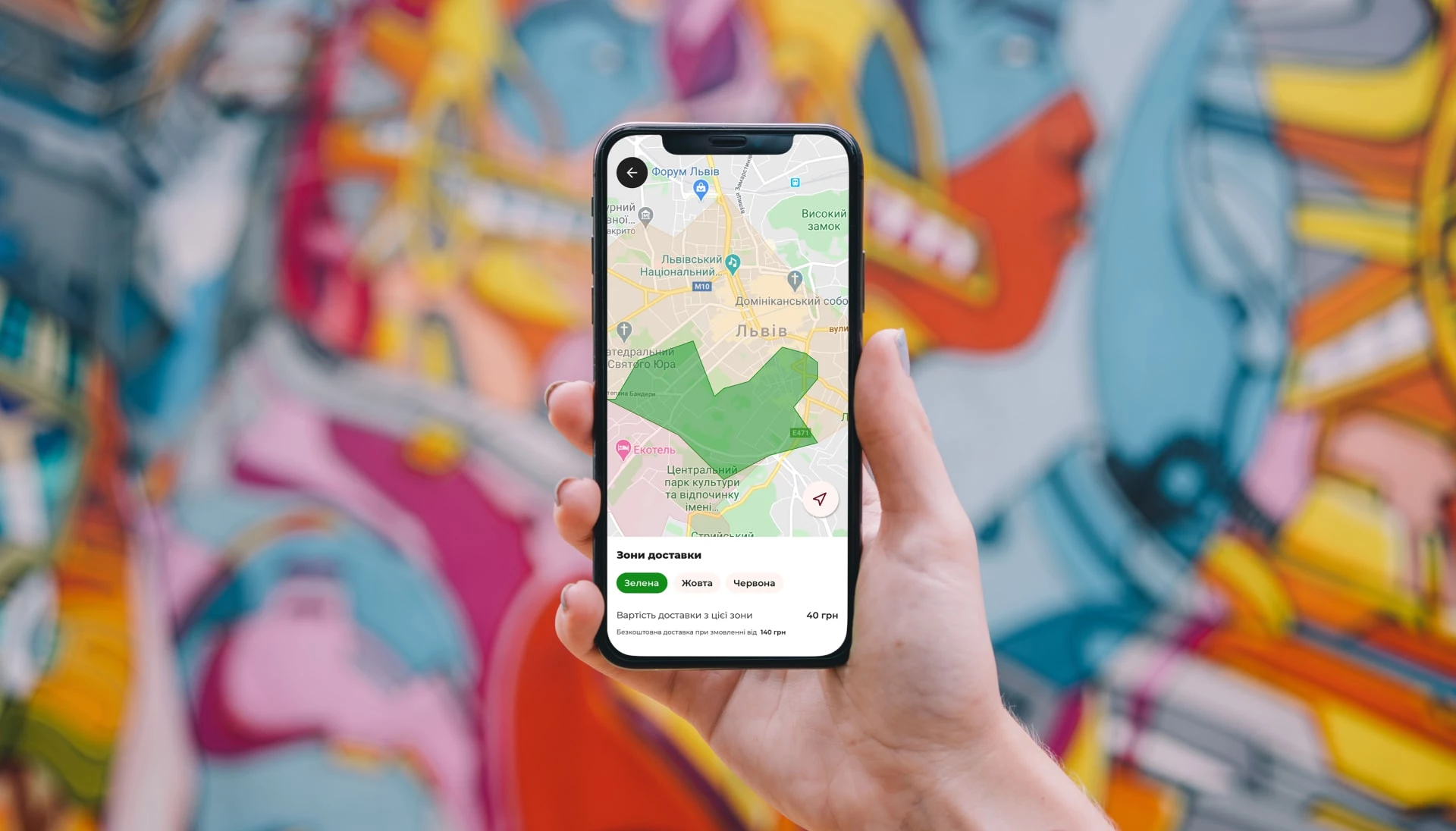
Courier’s info
A user needs to be aware of certain courier’s details: name, vehicle, and phone number to get in touch in case of necessity.
Order history
This feature is important for both clients and vendors and also the admin panel, for the possibility to recall the order, either to check the details or possibly to find the dish name.
Restaurant’s App
Sign up page.
Food businesses should be able to provide their profile with the name, location, business hours, contact info, and menu.
Menu management
The restaurant employees in charge need to be able to add, remove, and edit menu items. Uploading pictures is highly preferable as people eat with their eyes. Additionally, including descriptions and prices to complement the dishes is important.
Courier tracking
To provide fast and convenient delivery a food establishment should be able to find the nearest courier or the one following the necessary route.
Chat
All the 3 agents should be able to contact each other, chat can facilitate smooth and real-time communication, convenient for everybody.
Order management
Restaurants should be able to easily access orders to accept, change or decline them. Consider the option of changing the order status.
Order status tracking.
Restaurants should be able to see upcoming, processing, and already delivered orders to correctly distribute work and estimate the time of delivery.
Special offers
These functionalities may attract more clients.
Payment management
Payment methods should be stored and managed on the admin panel ensuring a high grade of accuracy and security.
Analytics
This is an integral part of every admin panel, providing helpful insights into the application performance metrics. It allows you to track inventory, orders, delivery times, marketing campaigns, revenues, and much more details.
Courier App
Account creation
Couriers should also have the option of signup to provide their email, phone, and possibly social media networks. The account should be verified as well as all the essential documentation and information provided.
Maps
Geolocation on the courier side of the app will allow delivery agents to find the best routes to the customers. Make your map looks professional and interactive, take UberEats as an example.
Order data access
Delivery agents should know such order details as delivery address and time, the order contents, and the user’s name and contact info, so they need access to all these.
Order status updates
Couriers should be able to change the status of the order when they arrive at the restaurant, pick up the order, and leave to deliver it, so the customer is kept updated.
As soon as you know all the features to include or at least to consider for your food delivery app to be, let’s speak about the development process a bit.
Want a web app that does more?
Let's build a solution that's smart, sleek, and powerful.
Alina
Client Manager

Stages and Costs of Development
We have a proven step-by-step procedure for software solutions development from the ground up. It includes the discovery phase, design, development, testing, release, and support on the demand of the client.
Discovery phase
It’s a crucial preparatory stage, during which, we analyze the idea at hand and conduct extensive niche and market research, studying the existing solutions and the demand. This helps find out the pains of the audience, identify gaps, and ensure that the idea is feasible, viable, and scalable. Technical requirements and constraints defined during the discovery phase help us speed up the development and improve the final product's quality.

Design
The app's appearance is crucial to its success, so your solution should be visually appealing, simple to use, and easy to navigate. So, designers focus on the app's UI and UX during the design stage and create wireframes and prototypes to refine the design before development.
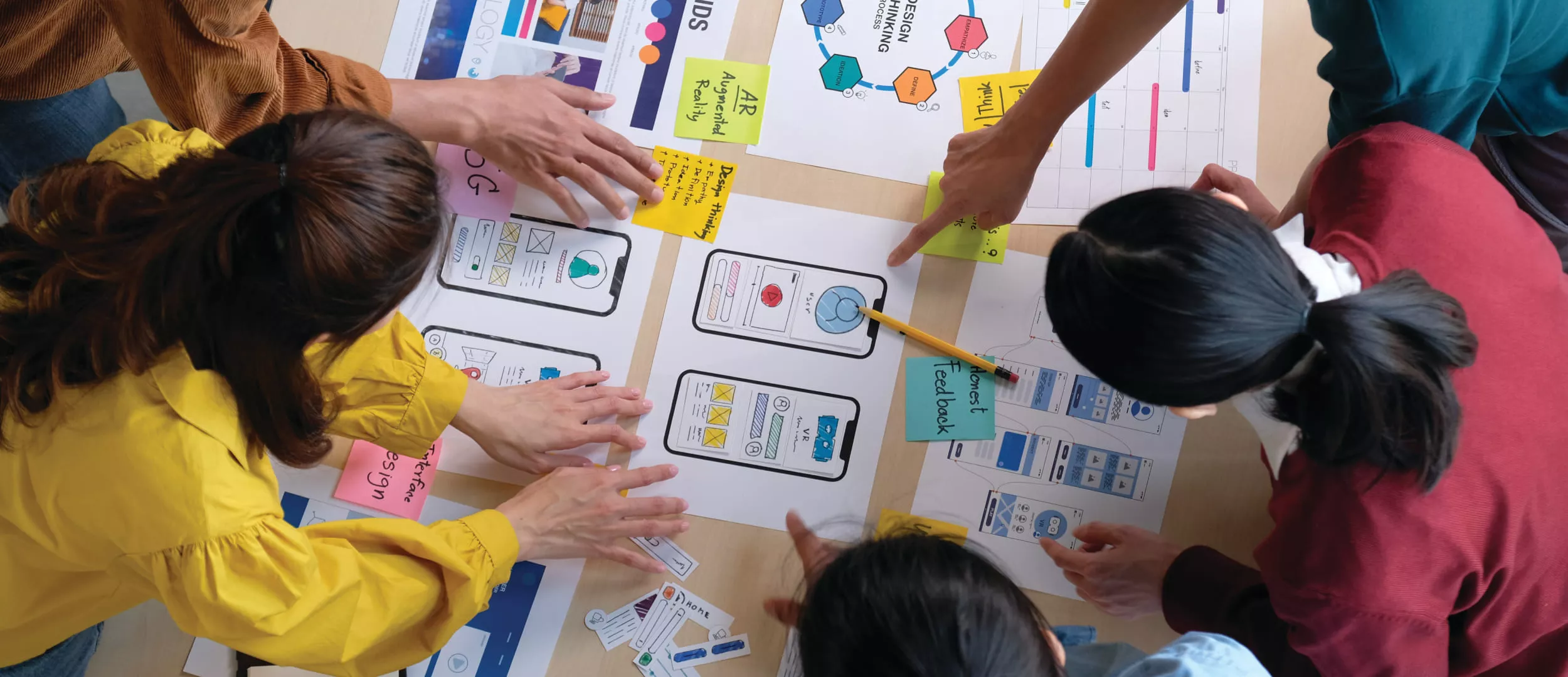
Development
With a basic design in place, we proceed to the back-end development turning specifications into code that works and meets all the requirements and the highest standards. After the back-end development is finished, the front-end and back-end portions of the app are integrated.
Testing
At Stfalcon we always thoroughly test the created solutions internally and externally before release to identify and resolve issues and bugs. Later on, they can become more difficult and expensive to fix.
After corrections and re-testing when the software functions as intended, the app can be submitted to the app store for review.
Release
It’s a critical point at which the software is made available to the public and begins to be used in the real world. We always help our clients with this phase, because we know all the nuances and requirements of the apps in the process of submitting them to the Google Play and App Store.
Support and Maintenance
Finally, the support stage comes, it may involve fixing bugs and issues or updating the software to work with new technologies. Support can be realized by our expert team or on the client’s side if he decides so. Anyway, ongoing support and maintenance are critical to the success of the product. In such a way, it continues to evolve and improve over time.
As usual, speaking about the cost to develop a delivery app, we can only indicate some range between $90k to $150k. The cost of software creation depends upon the features list that you wish to add to your app.
Our Experience
Balabing
As a food delivery app development company, Stfalcon had the experience of developing iOS and Android applications for a food truck management company.
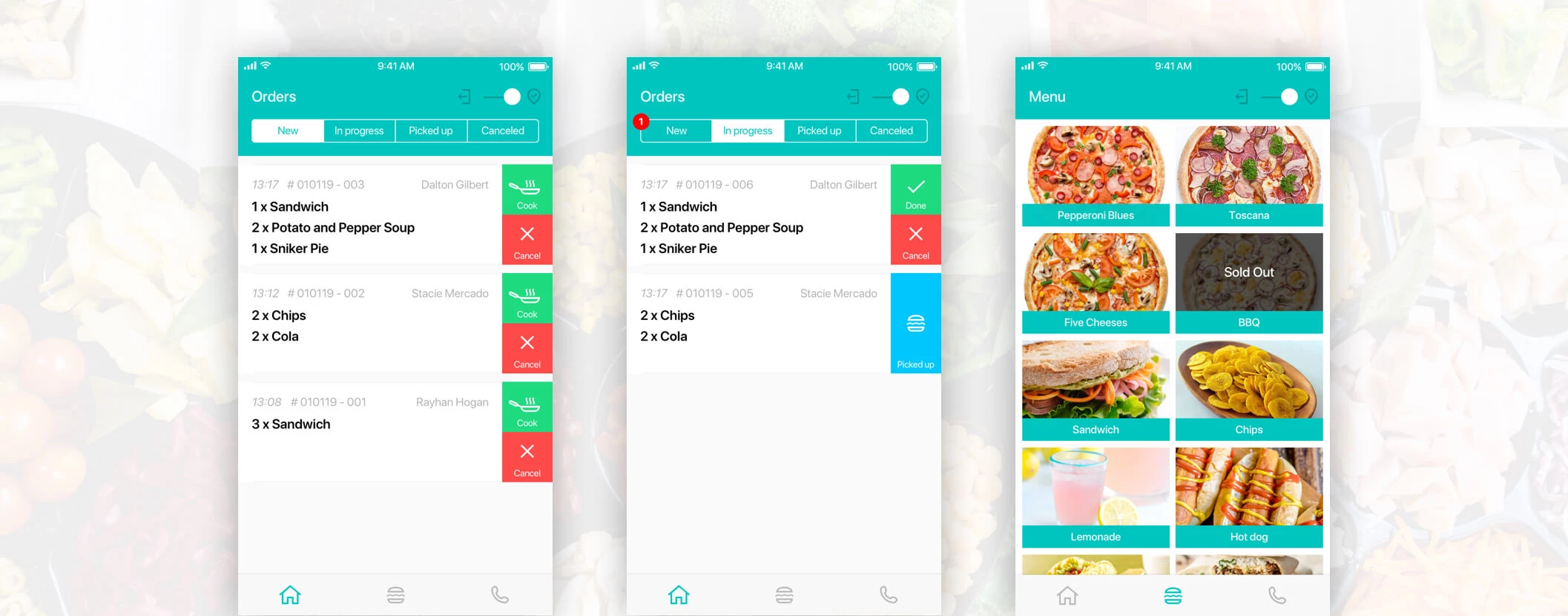
The solution allows the users to place orders online and pay for them, while Stfalcon’s client can manage it via a web-based admin panel.
During the Android development, we followed the principles of Clean Architecture and used common Domain and Data modules for the client and vendor apps to avoid business logic duplication. It helped us to reduce the time of development and simplified the process of making changes later on.
IOS version architecture is realized like the one on Android. It comprises 4 modules, RxSwift was used for data binding, and MVVM architecture was applied for the Presentation Layer. We should just mention that the app exceeded the expectations of the client because Stfalcon always goes above and beyond to deliver quality results.
Final Thoughts
Online food ordering business is a fast-growing trend, so no restaurant, café, or food establishment should ignore food delivery app development services. What’s important, is that technology is continuously developing, so the competition between the solutions in the market is high. That’s why you should carefully consider all the elements of your solution and entrust it to real professionals. Stfalcon is ready to take on the new challenge and craft a food delivery app for you. Feel free to contact us and discuss all the details.

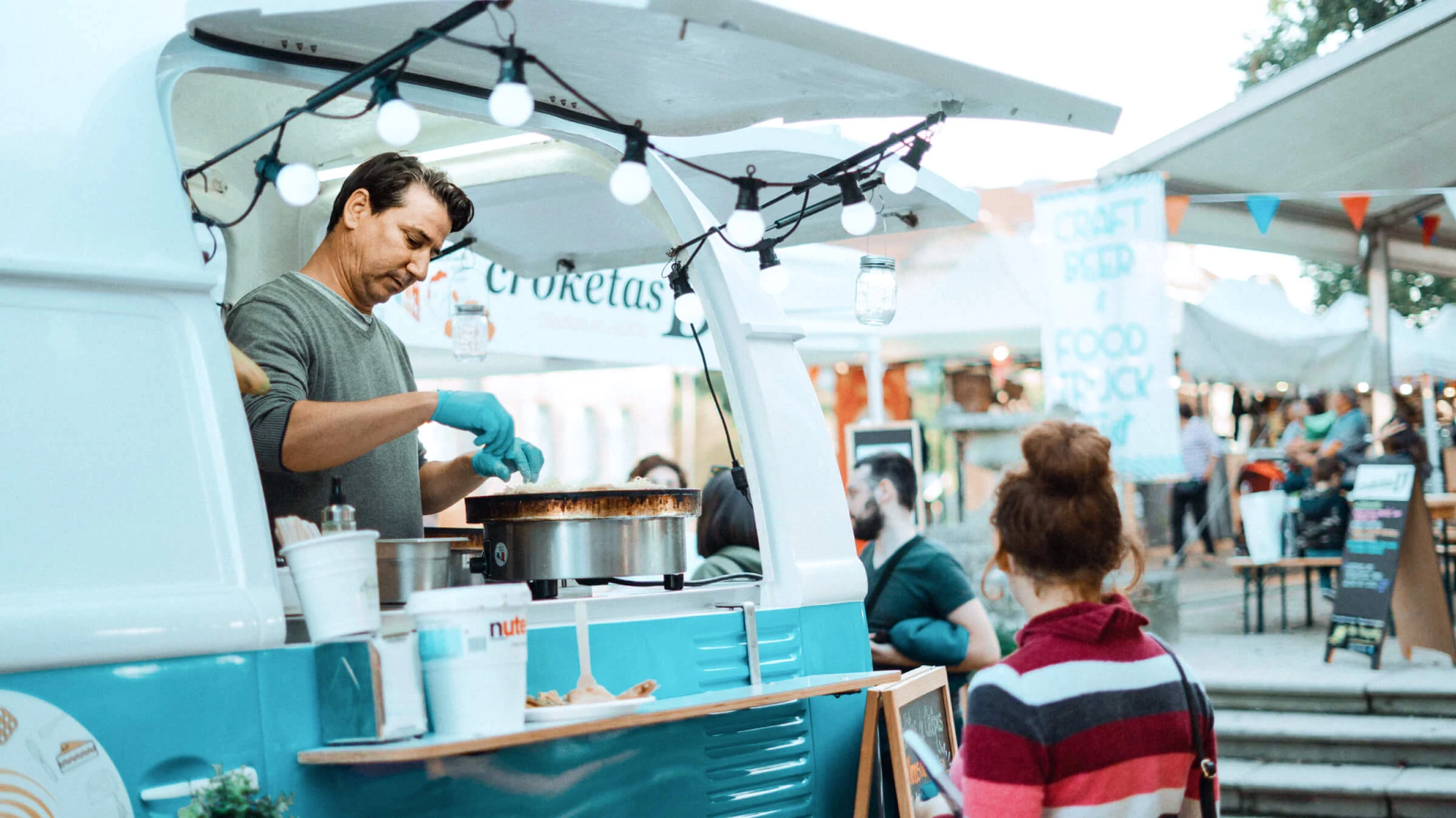 Read the full case study
Read the full case study


